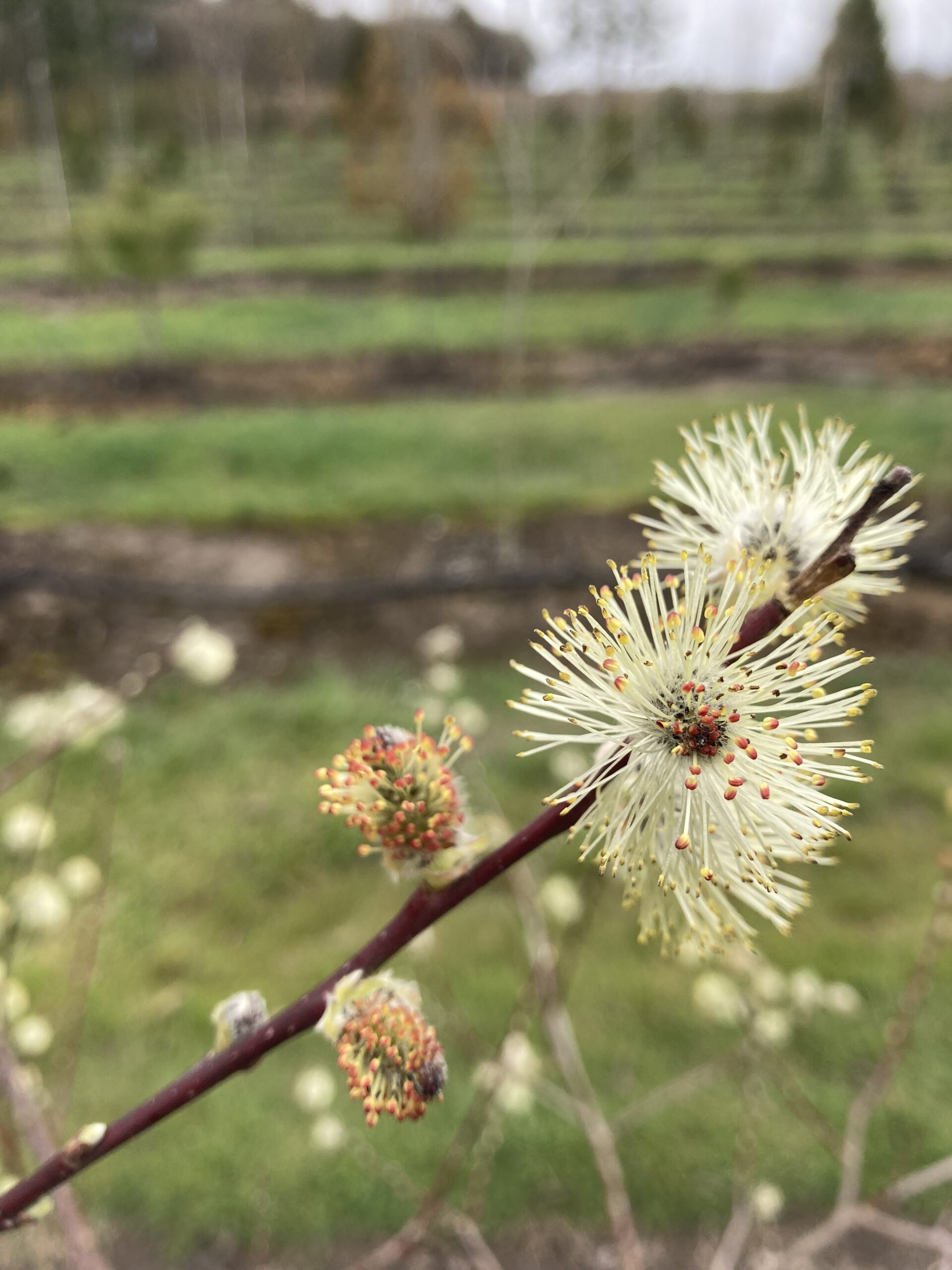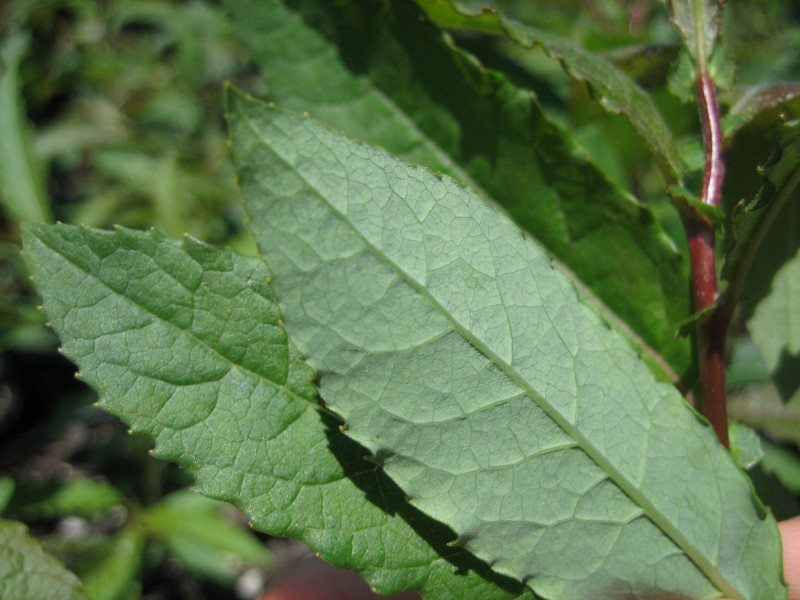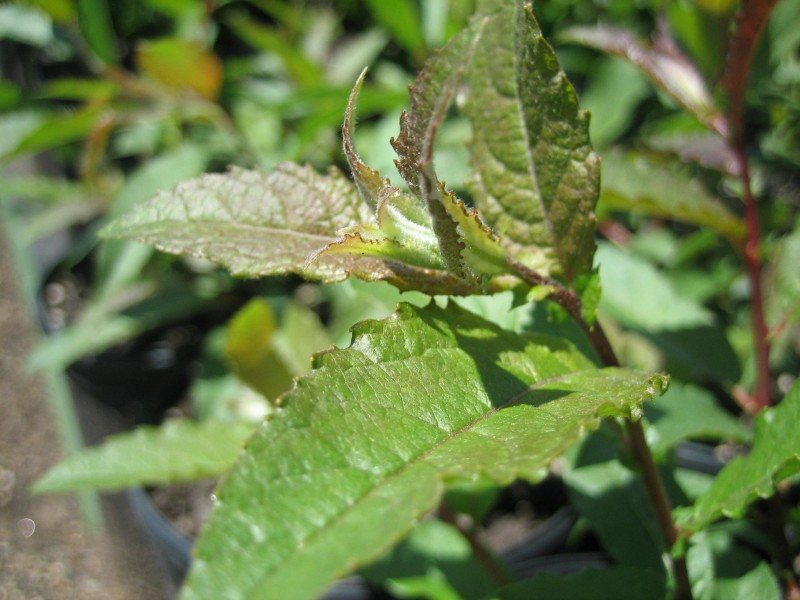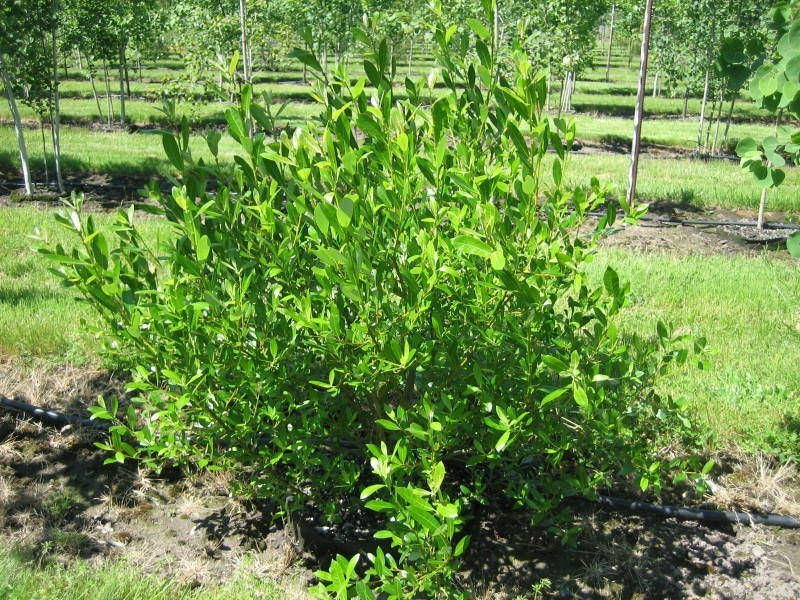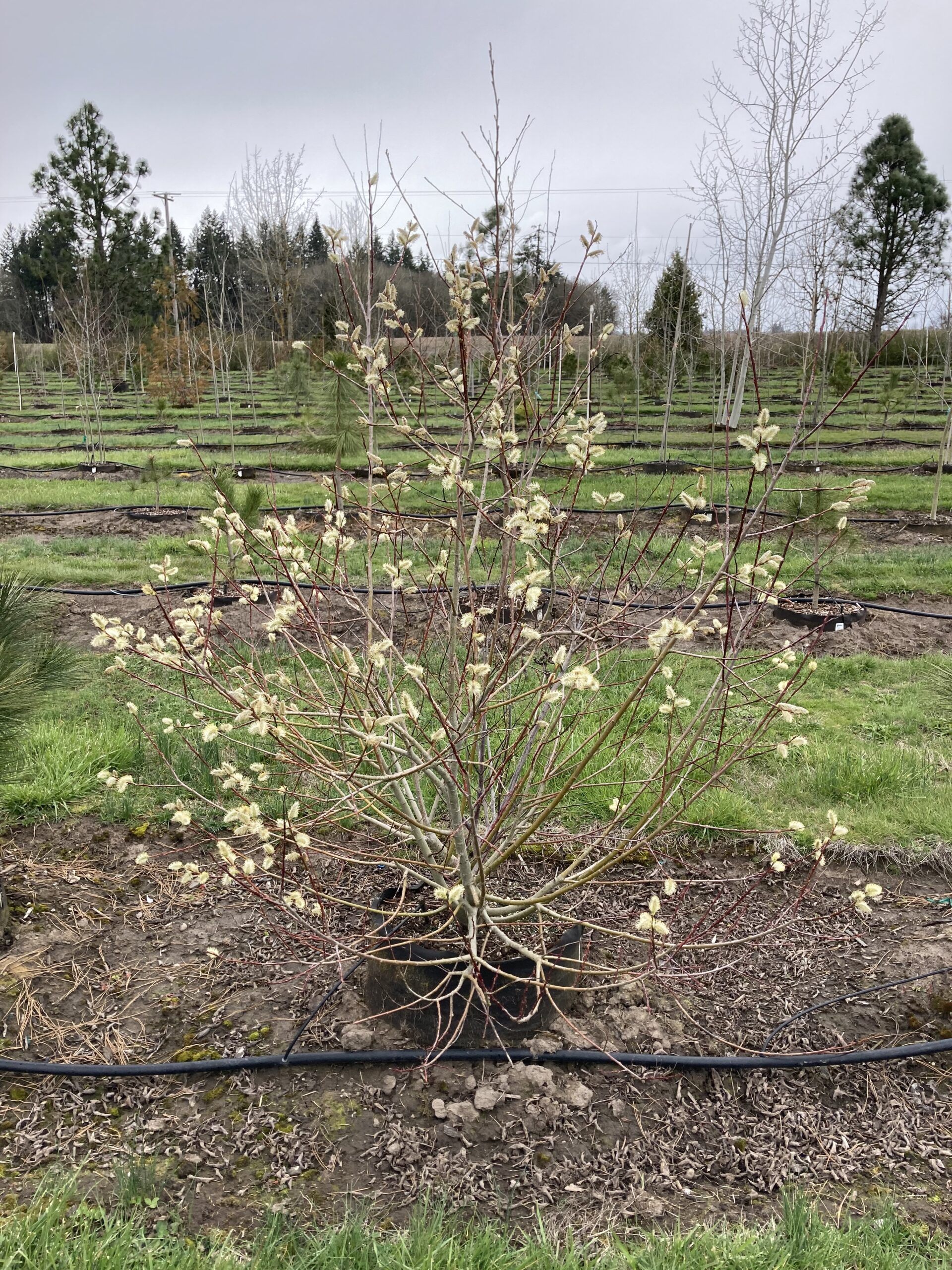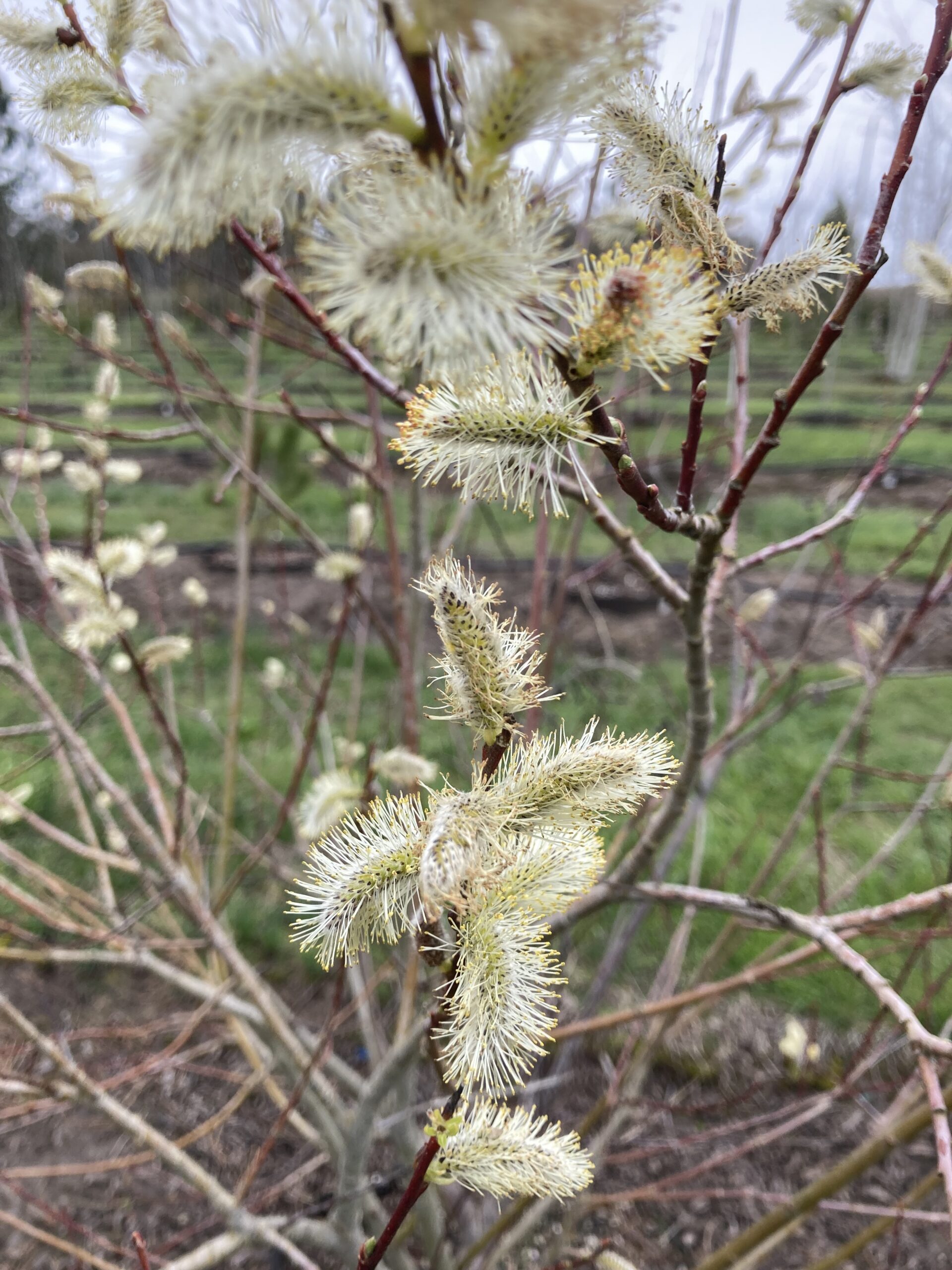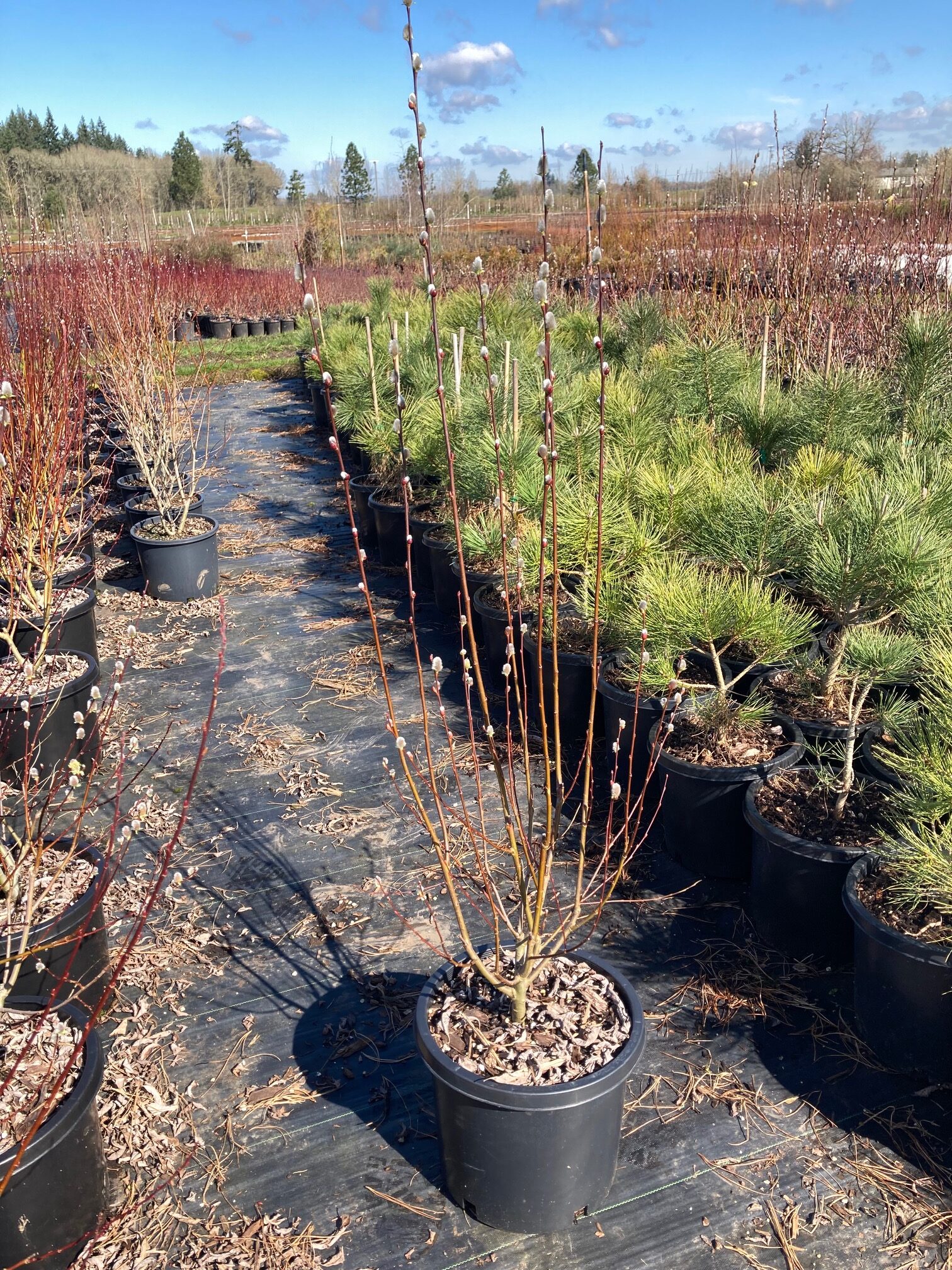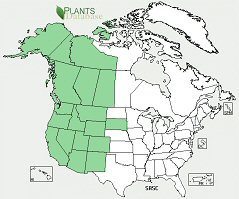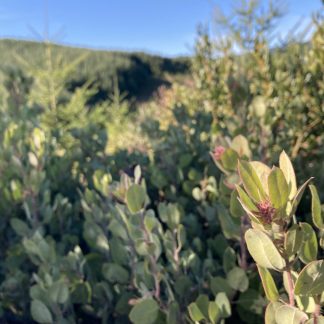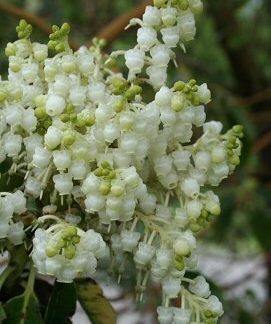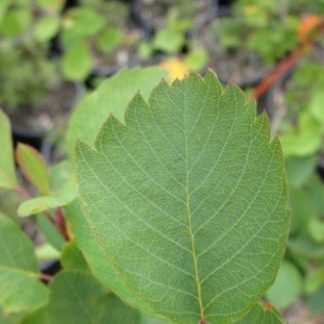Salix scouleriana
Scouler's willow
Habit: a slender crown with straight, multiple stems and few branches. Bark is red-brown and thin with flat ridges. The stripped bark of Scouler willow has a skunky odor. The blue-green leaves are slightly spoon shaped to widely oval closer to the tip, the leaf undersides are either smooth or covered in small reddish hairs. Flowers are small pussy willow-like catkins. The fruit is a small long capsule the opens releasing a white fluff with tiny imbedded seeds. Blooms April through June.
Ecology: found in riparian zones, wetland edges, disturbed areas, clearings, one of the only willows found in the drier habitats of upland forests at elevations up to 9800 ft (3000 m) in western North America and east to western South Dakota.
Growing Conditions: full sun to partial shade, in semi-dry to wet soil. Tolerating dry conditions better than the other willows, cannot handle xeric conditions.
Great wildlife plant and the fibrous, deep root system can be used to aid in erosion control. Important forage plant for Alaskan moose.
Specs
Deciduous Shrub/Tree
6.5-50 ft (2-15 m)
6.5-50 ft (2-15 m)
3-9

